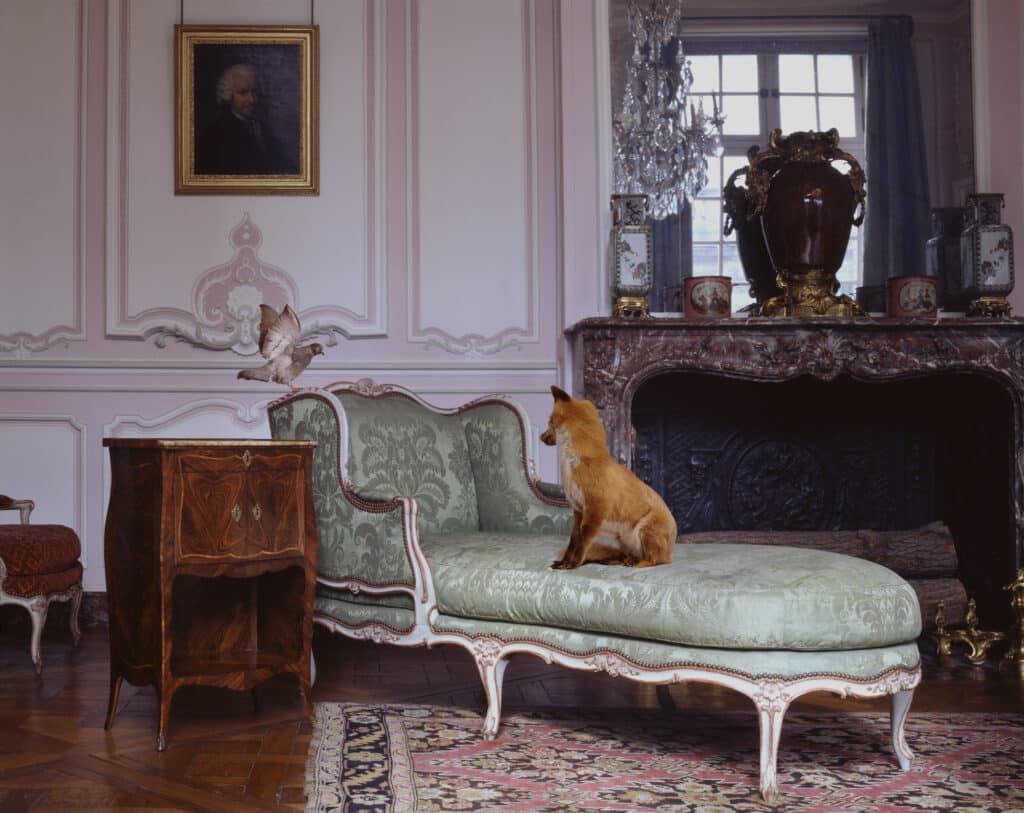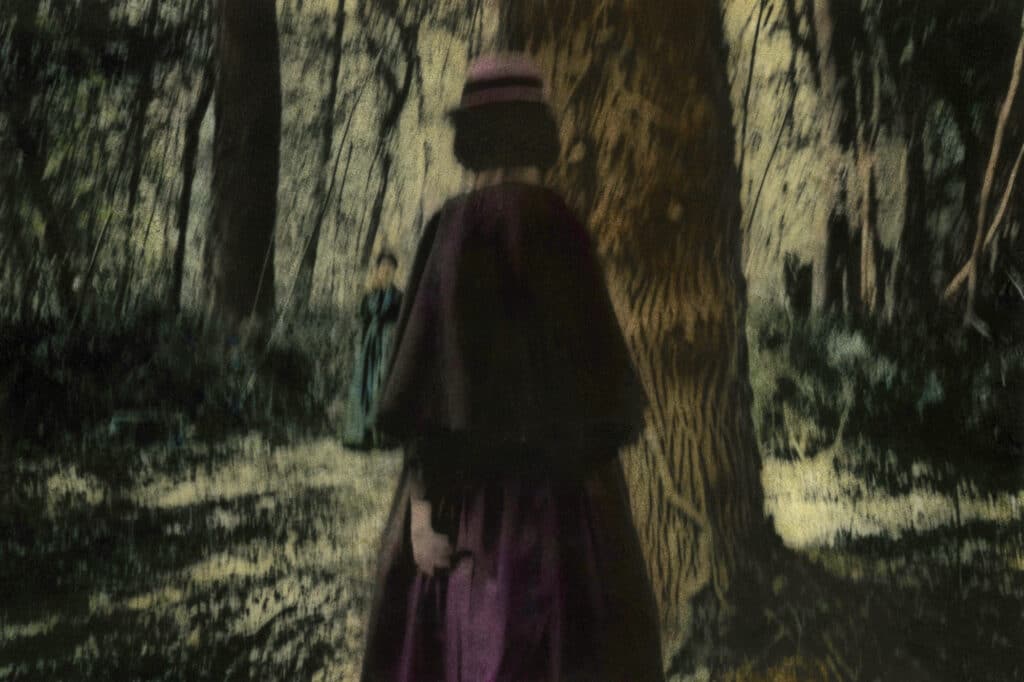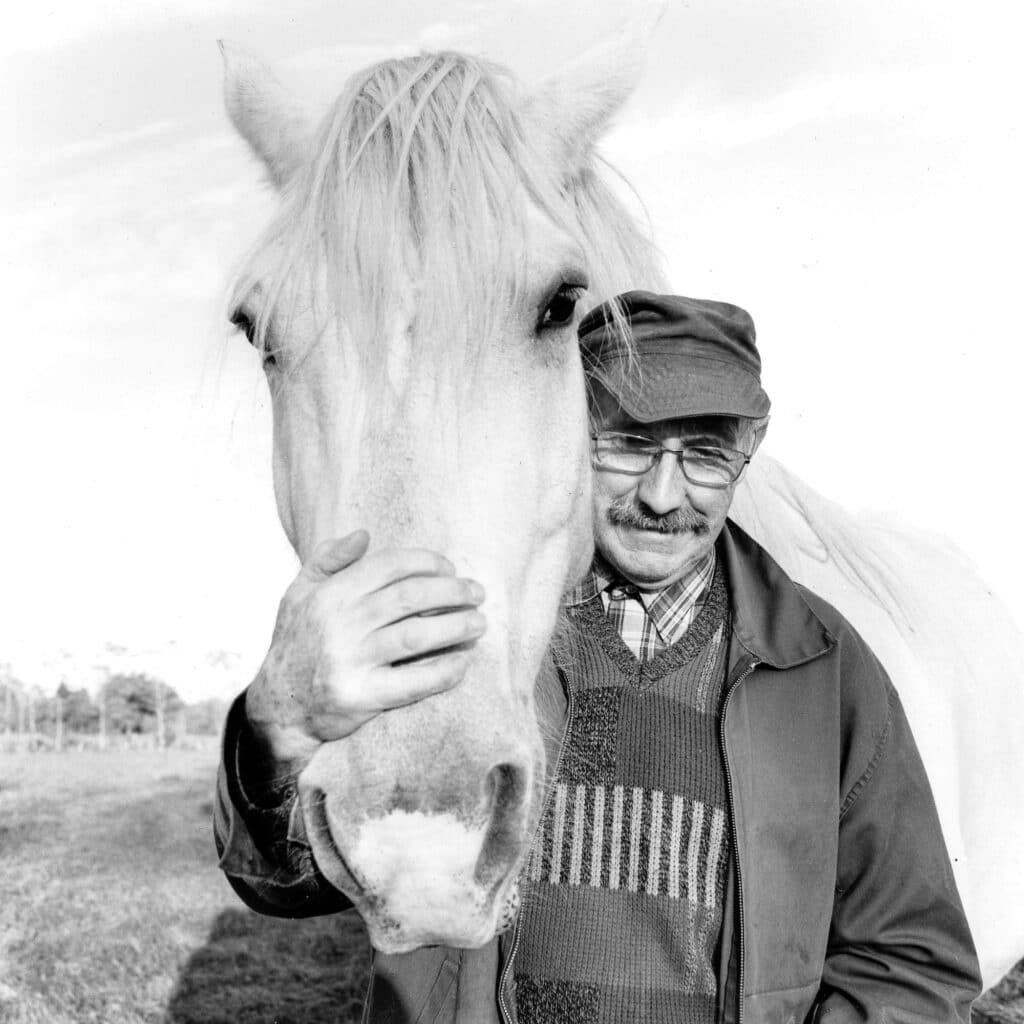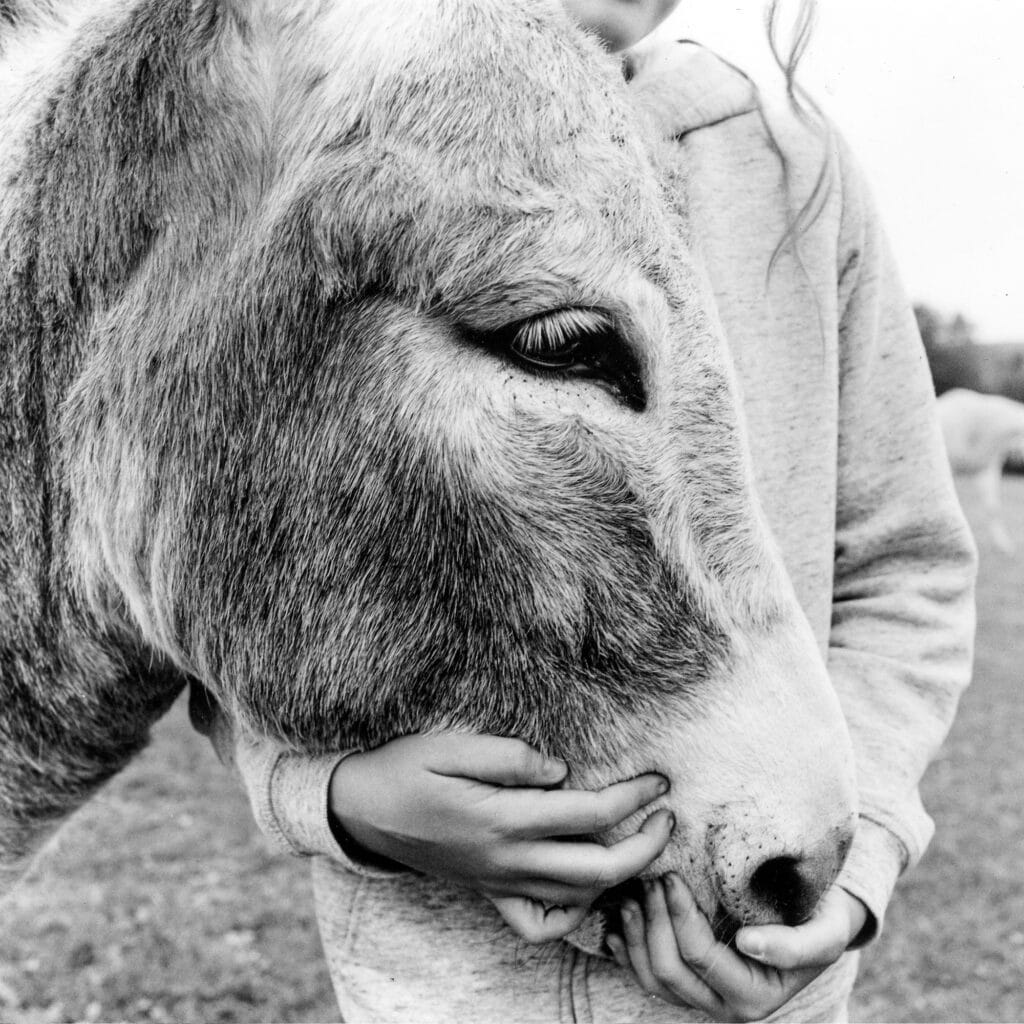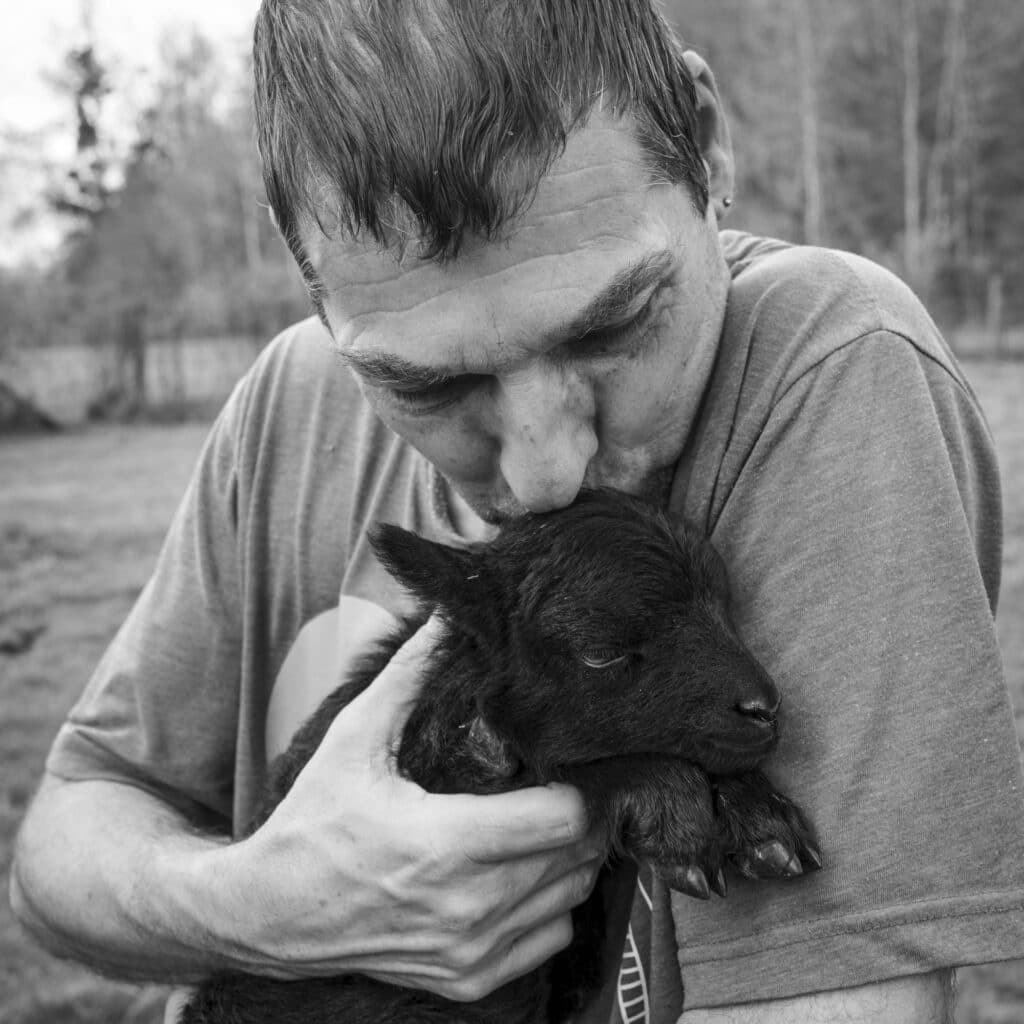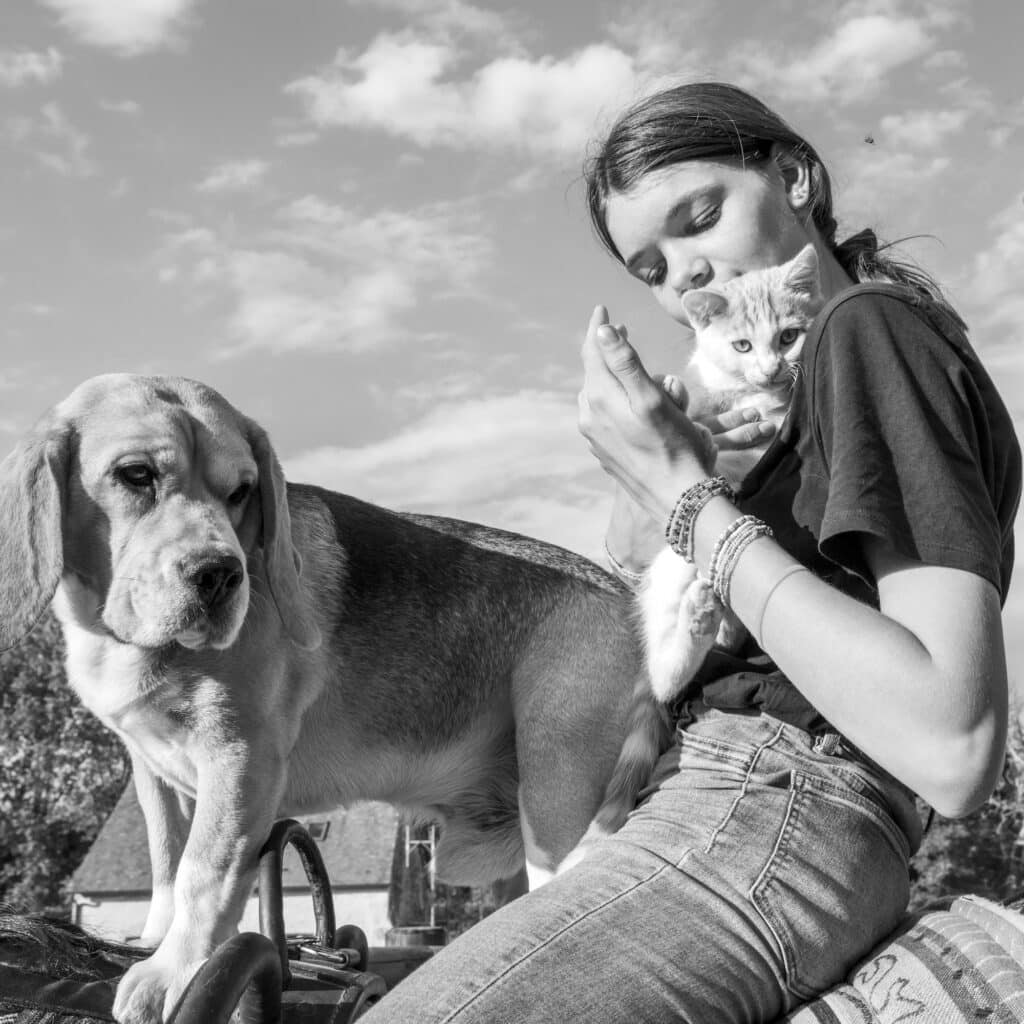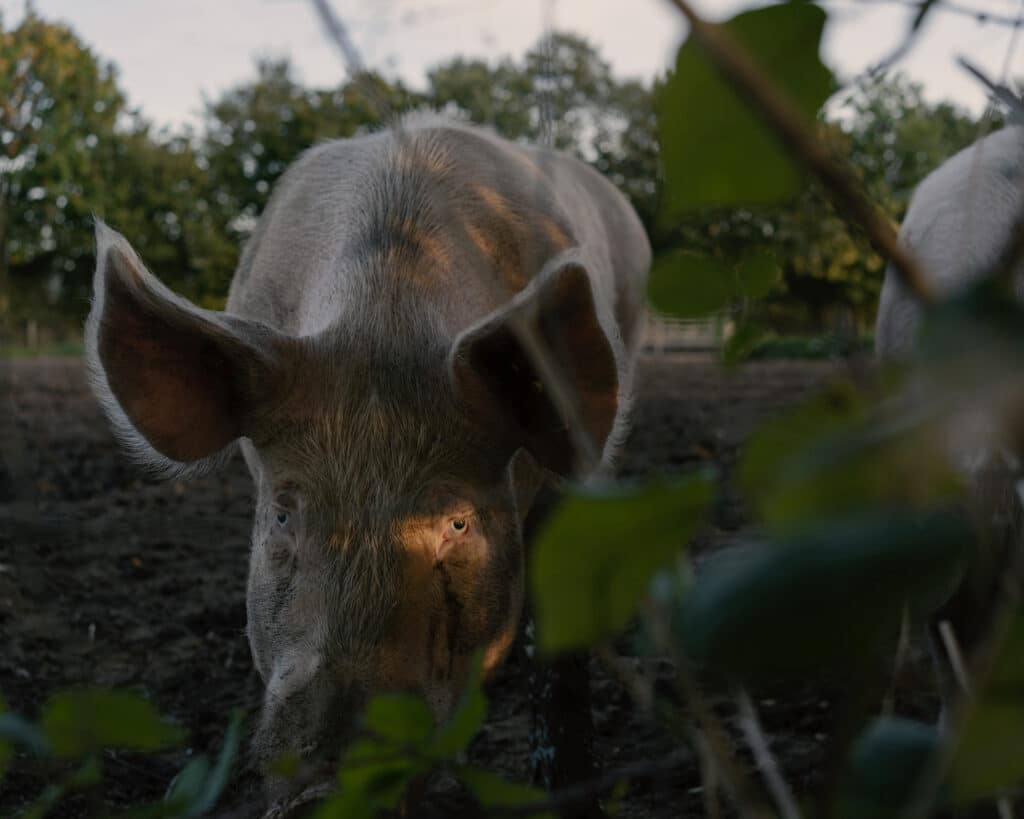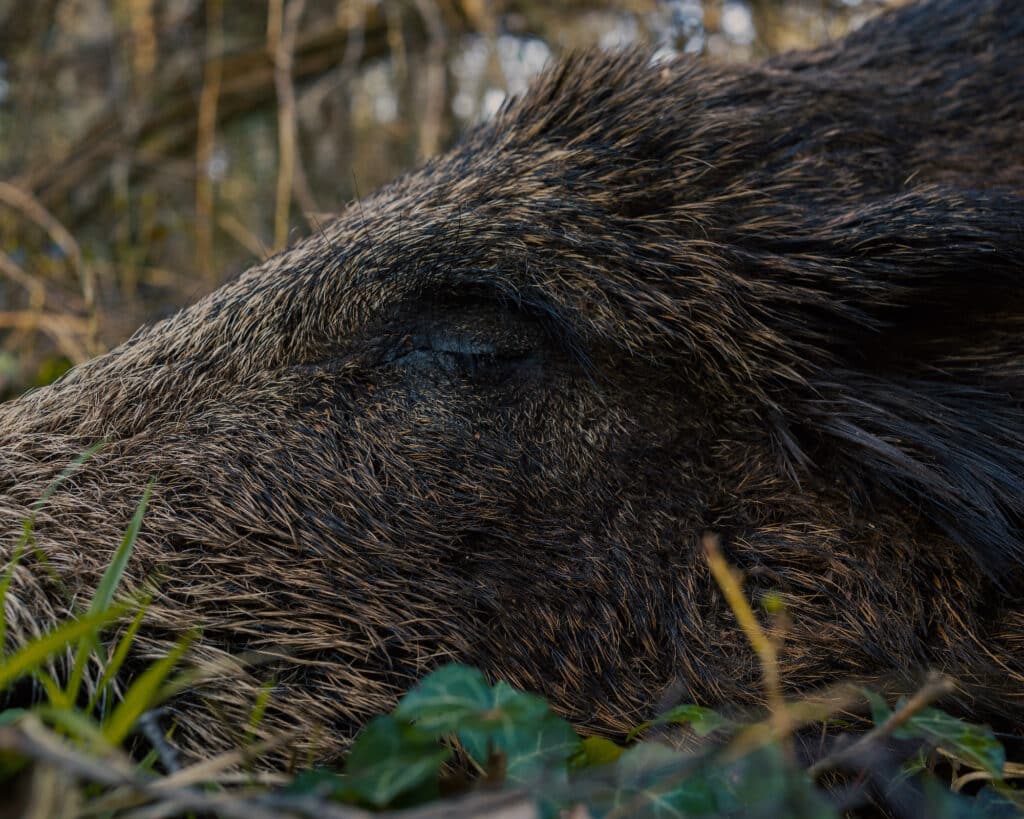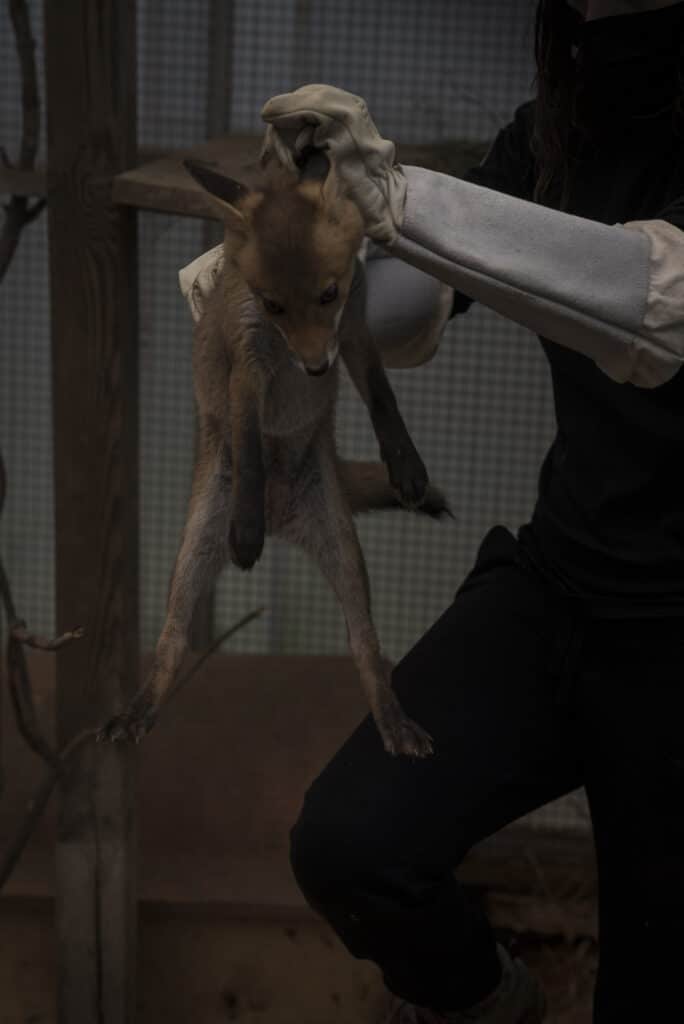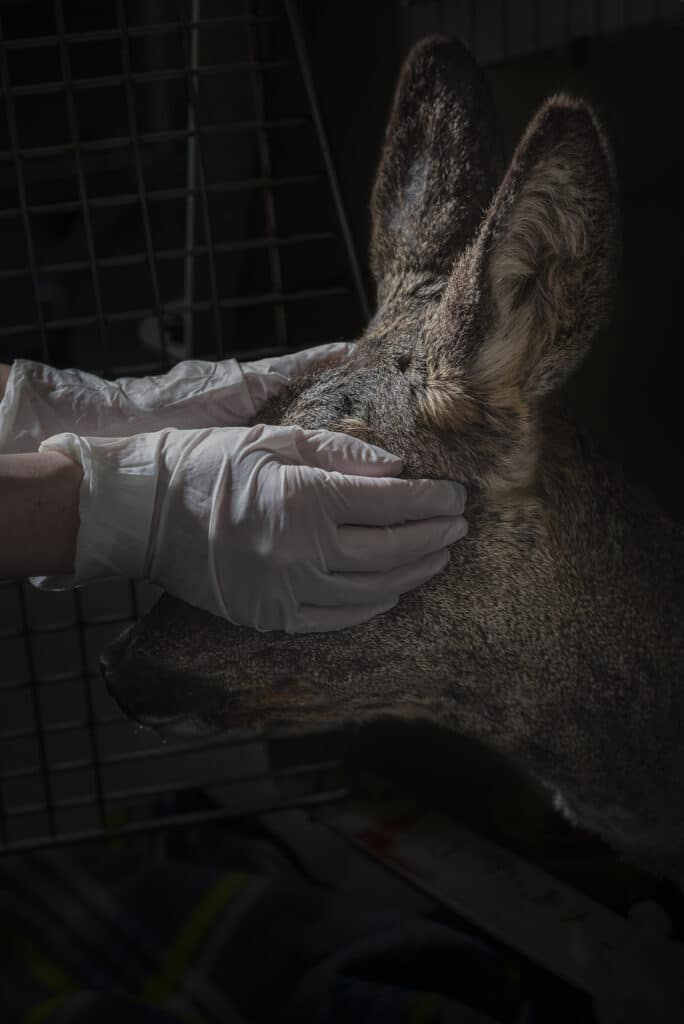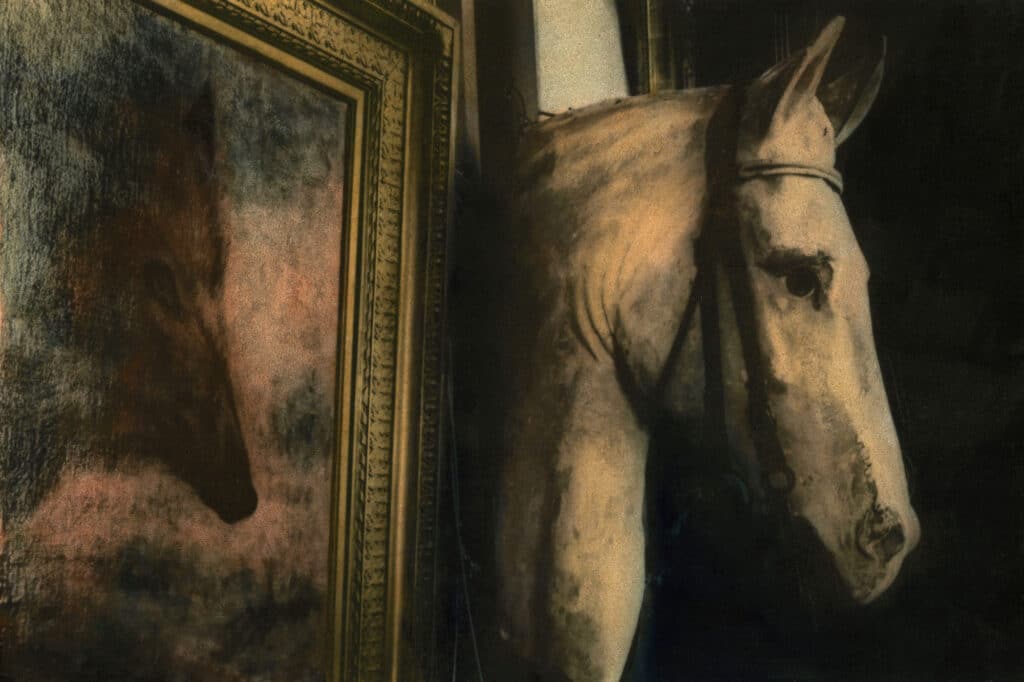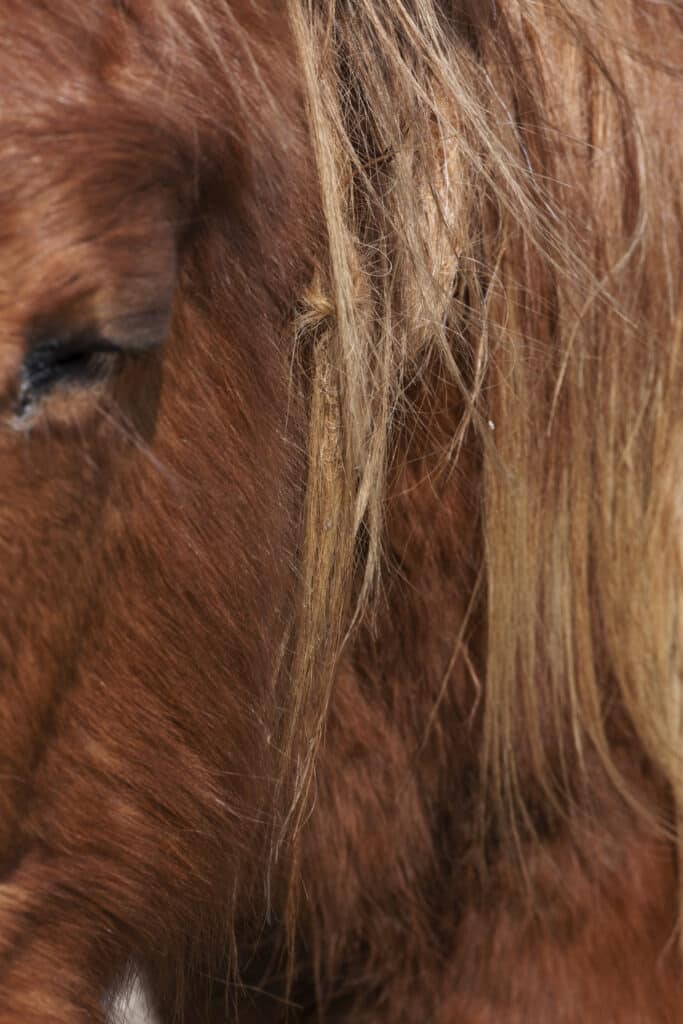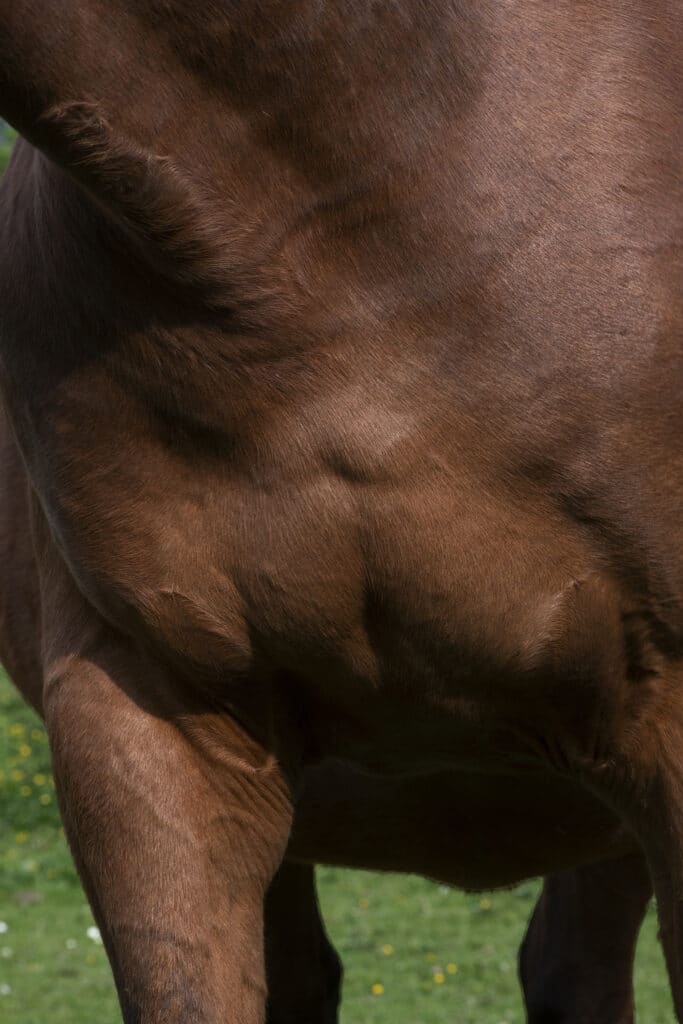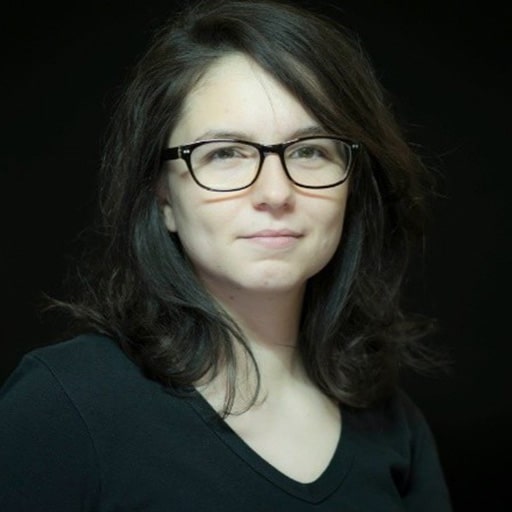A photo in nostalgic tints, showing an artist’s hand sketching a mountain goat, is suspended mid-air at a hilltop estate populated with brick buildings. One hardly notices the metal frame that keeps the print in place, level with the espaliered fruit trees.
One’s eye is drawn away from Irène Jonas’s photograph to the panorama that spreads just beyond it: valleys splashed with the colors of spring as the rapeseed blazes yellow among all the shades of green. We are in the heart of the Parc naturel régional du Perche, two hours west of Paris, France.
In this corner of Normandy, shaped by a long agricultural tradition, Christine Ollier, a former Parisian gallery owner, has launched Le Champ des Impossibles. The fourth iteration of the festival invites visitors to twenty exhibitions on the theme of the animal kingdom, installed in fifteen spaces and on view weekends and holidays through June 4.
“With the artists who come here to create, we promote cultural activity in this region”
“The seed of the festival was planted during a walk with the mayor of Perche-en-Nocé who showed me the churches and the landscapes,” recalls Ollier. “With the artists who come here to create, we promote cultural activity in this region.” Specifically, the event brings together contemporary art and local heritage: all the exhibition sites—country manors, churches, old farm buildings, as well as private homes—bear witness to the region’s rich and complex history.
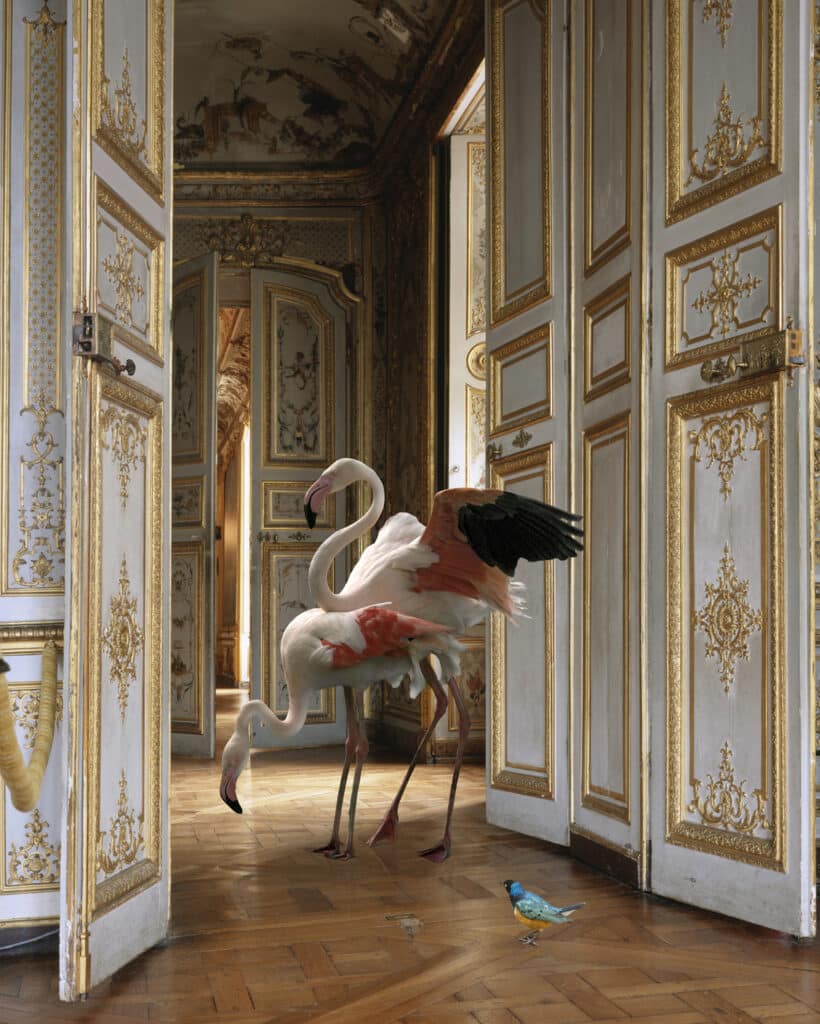
They are, as the artistic director points out, like “display cases.” Perche-en-Nocé Mayor Pascal Pecchioli is pleased the event brings “thriving culture to a rural area.” “Last year, we had 13,500 visitors, half of whom were local residents,” notes Ollier.
Le Champ des Impossibles offers the region’s inhabitants a fresh look at their territory. Some places are rarely open to the public. The program also highlights the work of local artists, such as painters Djabril Boukhenaissi and Isabelle de Noaillat, or photographer Jimmy Beunardeau. A key part of the project, however, are artists’ residencies which, Ollier points out, “keep Le Champ des Impossibles alive all year round.”
One artist-in-residence, the American Anne Rearick, for example, whose images are presented on the top floor of the Courboyer Manor, a fifteenth century structure designated a historical monument in 1981, spent several months in the region. She interacted with the local residents as well as their animals. A photographer at the VU’ agency, Rearick insists, in a volume in the collection Les Carnets (published jointly by Art Culture & Co. and Filigranes), that “the Perche inhabitants possess a deep connection to the land.”
In the exhibition, portraits (often of elderly people, children, or teenagers) alternate with landscapes and interiors, an everyday life where animals play their part: here a cat is being scratched, there a dog curls up in an armchair, elsewhere a kid receives a tender kiss on the head.
The inhabitants’ tenderness for their animals is mirrored by Rearick’s affection for her models. The images emanate with warmth, respect, and profound interest in fellow human beings. Ollier sees in the “soft greys” of Rearick’s prints “a revival of humanist photography.”
In the park surrounding the Courboyer Manor, however, humans are nowhere to be seen: it is the domain of the wild animals photographed by Jimmy Beunardeau. This “country native” is one of the emerging talents showcased at Le Champ des Impossibles alongside better known artists, such as the painter Françoise Pétrovitch and the photographer Karen Knorr.
A small pond throws reflections on photographs shot during nighttime. The contrast between the bright daylight and the dark pictures forces the viewer to examine the images up close. At long last, the animals emerge, like this deer and the stag in the pride of his antlers.
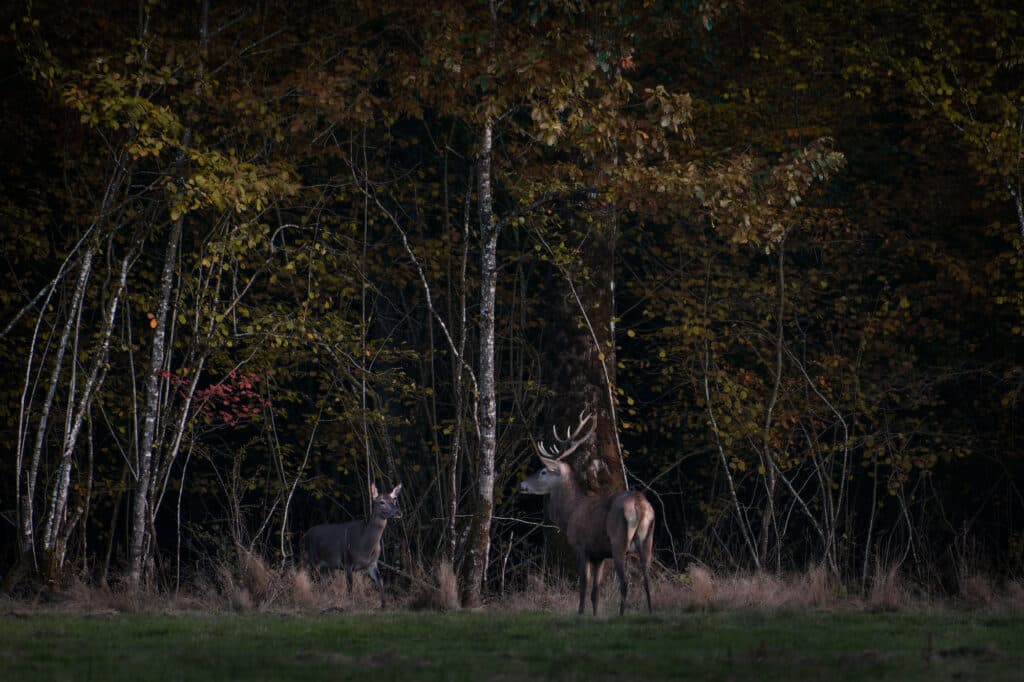
Likewise, Mathieu Lion’s exhibition at the Blanchard Mill, brings us face to face with the forest fauna. This is the realm of wild boars: we can follow their trail, guided by their grunts and growls recorded by Lion along with the voice of Rémi, a local who taught the photographer the art of animal tracking. The intersection of the two mediums allows for a different approach to the natural environment: “I am interested in the landscape and those who are familiar with it,” sums up the photographer.
Aurélie Scouarnec foregrounds the connections between human and animal. Recipient of the Bourse du talent in 2021, the Parisian photographer has followed the activities of Faune Alfort, an organization that takes in injured animals and restores them to health before releasing them back into the wild.
In a small gallery at the foot of the church in Nocé, Scouarnec’s prints show the attentive hands of volunteers gently handling birds of prey, swifts, or deer. “This series is somewhere between auteur and documentary photography,” comments Ollier.
In the gardens of the Domaine de Méhery, exceptionally opened to visitors for the exhibition, Irène Jonas’s photographs leave no doubt about their nature. Scattered around the verdant space, they evoke ancient times, ladies clad in long robes, naturalized animals, and naturalist drawings. “Memory is my guiding thread, appearance and disappearance,” says the photographer.
This series stems from a residency at the castle of the painter Rosa Bonheur (1822–1899) in Thomery (Seine-et-Marne). The photographer plays in particular with the juxtaposition of images taken in the Thomery park, just as, by a prodigious turn of events, a period film was being shot, and portraits of animals. The selection of images and the scenography of the exhibition are the work of Christine Ollier. This space, just as the other fourteen, is to be appreciated at two levels: the level of art and of the landscape.
Le Champ des impossibles, until June 4, Perche-en-Nocé.
With exhibitions of Jimmy Beunaudeau (photo), Djabril Boukhaissi (painting and engraving), Martine Camillieri (photo), Manoli Gonzalez (ceramics), Sébastien Gouju (ceramics), Benoît Huot (sculpture), Irène Jonas (photo), Karen Knorr (photo), Marina Le Gall (ceramics), Mathieu Lion (photo), Julien des Monstiers (painting), Isabelle de Noaillat (painting, drawing), Françoise Pétrovitch (painting, drawing, video), Catherine Poncin (photo), Camille Pozzo di Borgo (engraving), Anne Rearick (photo), Aurélie Scouarnec (photo), Francesca Todde (photo), Yves Trémorin (photo), and Sylvain Wavrant (sculpture).
